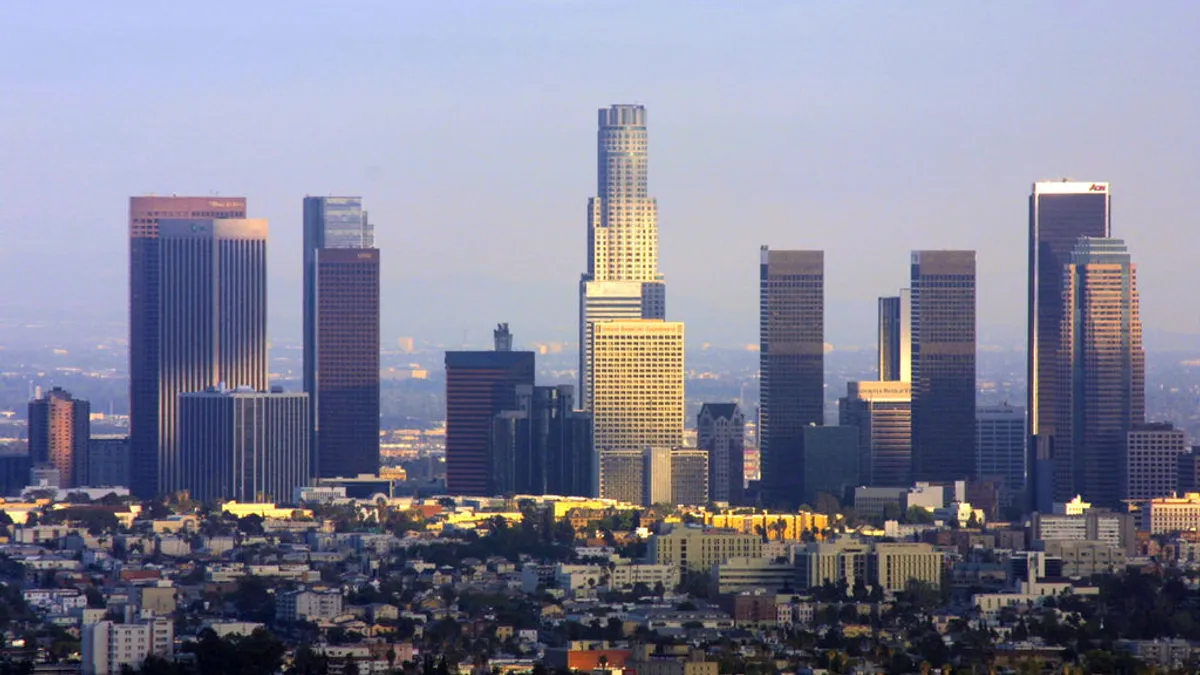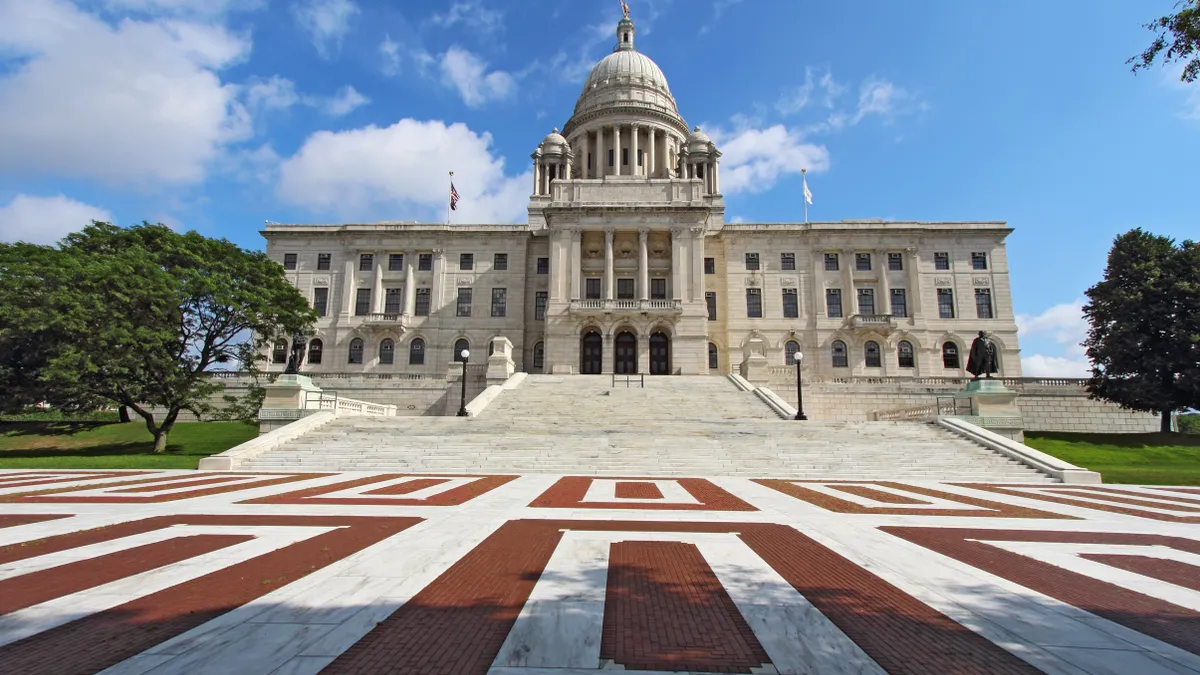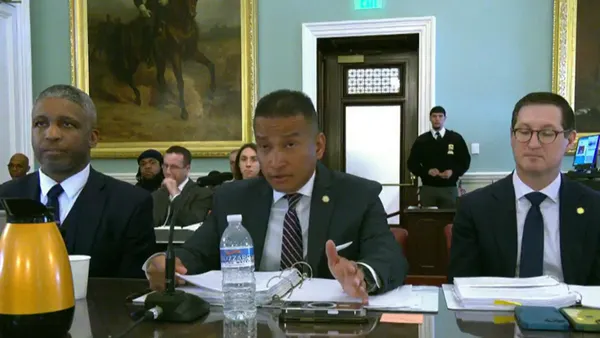Los Angeles is one step closer to implementing a commercial waste franchising system that could change the local industry for decades.
The Los Angeles Board of Public Works recently passed a vote awarding 11 franchise zones to seven private companies: Athens Services, Republic Services, Waste Management, Universal Waste Systems, NASA Services, CalMet Services and Ware Disposal. Los Angeles Bureau of Sanitation (LASAN) has vouched for the plan's thoroughness and reliability. Local advocates say that implementation can't come soon enough. Their counterparts in New York have heralded the news as a sign of what's possible. Yet some in the industry resist a comparison and say the true test will be how well the system works in its first couple years.
Preparations for the system could begin as early as January, pending approval from Mayor Eric Garcetti’s office and the Los Angeles City Council. Garcetti was council president when the idea first originated and proposed the "zero waste" goals that would be much harder to reach without this plan, so its approval is seen as likely.
As the process moves toward a conclusion, Waste Dive has highlighted five areas of interest based on a review of the LASAN proposal, discussions at the Sept. 26 Board of Public Works hearing and additional conversations.
What will this cost customers?
According to LASAN, 85% of the roughly 65,000 accounts in play are already served by one of the seven haulers selected for franchise zones. Yet depending on location, customers could see their haulers change and subcontracting will give customers further choices. While recycling options are not currently guaranteed, every customer will now be provided with a black bin and a free blue bin. The rate for weekly collection of a 3-cubic-yard black bin, with unlimited recycling, can’t exceed $216.72 per month. Green bins for organics will also be provided at a cost which can’t exceed that of a black bin.
LASAN details how this rate is either similar to or lower than the average rates for other exclusive franchises in California, but not how it compares to current rates. The city’s Department of Public Works told Waste Dive that these rates can't be compared because under the current permit system rates and services vary widely.
"The objectives under Zero Waste L.A. focus on uniformity, transparency, and predictability in customer maximum rates, so customers can clearly know the cost of services. Some customers will pay more than they currently pay, some will pay less in the new Zero Waste L.A. Franchise System. Many current service agreements only include solid waste collection and disposal," wrote Elena Stern, senior public information officer, in an emailed statement which also detailed new services. "Recycling is required to meet the City’s Zero Waste goals and for businesses to comply with state regulations."
The annual rate increase has been capped at 5% and, as noted, state regulations will eventually require organic diversion for many businesses. While customers will arguably be getting more robust and reliable service, it's possible that there could be some pushback from local businesses.
How will infrastructure investments play out?
A key part of the system is that haulers have agreed to invest a collective $200 million in collection and processing infrastructure. Clean fuel requirements mandate that all vehicles must use compressed natural gas (CNG) or liquefied natural gas (LNG). LASAN estimates more than 380 collection trucks will be needed to serve the 11 zones. These vehicles must also include on-board technology capable of "monitoring and recording data, vehicle dynamics monitoring, lift monitoring, photo and video and engine performance monitoring systems."
On the processing side, the seven companies have contractually agreed to make a wide range of facility improvements. This includes upgrades to existing facilities, addition of organics pre-processing equipment, the construction of new material recovery facilities and more. Athens Services and Republic Services have also teamed up with Anaergia on separate anaerobic digestion facilities, both of which will be paid for by Anaergia.
If the plan is approved on schedule, companies could begin making these investments as early as January 2017.
Will there be a model for reuse and food recovery?
In addition to annual bin cleaning, graffiti removal and community services, all haulers must encourage customers to donate items for reuse and participate in food rescue. As detailed by LASAN this means contractors are "required to utilize and fund reuse organizations, provide information to their customers on their use, and report to LASAN on their success in moving usable materials back into productive use." As the industry looks for ways to help achieve the federal goal of halving food waste by 2030, this could establish an interesting model for what many advocates say needs to happen on a larger scale.
How will educational outreach work?
The transition process will be complicated and LASAN has already recognized this fact by making its call center operational 24 hours a day. Haulers are required to operate their own call centers during set hours and be responsive to issues at any time. The city has also approved a staffing plan that will eventually bring on 87 new employees in multiple phases to help handle the transition.
All of the logistics in this transition will be complex and require highly specific coordination. In order to ensure they’re meeting reduction targets, haulers are required to conduct educational outreach with every customer and continue that through the term of the contract. This means dedicated staff members in every zone going to each business, performing detailed waste assessments every two years at a minimum and working with customers on waste behavior. As is the case with any recycling program this will only work if employees are on board and education will have to be an ongoing effort.
Are the diversion goals realistic?
This franchise system is seen by many as the only way for Los Angeles to reach its "zero waste" goals as haulers are expected to reduce solid waste by 1 million tons per year before 2025. This ties into the city’s goal of 90% landfill diversion by 2025 and 95% by 2035. It will also help achieve California’s goal of 75% diversion by 2020. In order to make this happen, haulers are expected to move about 65% of materials from the black bin to blue or green bins within the first 10-year contract term.
To ensure this is happening, LASAN will have dedicated managers for each contract, more than 30 inspectors in the field and a regular presence in processing facilities. Contractors will be required to submit monthly reports on how much material they collected and where it went. Failure to meet these reduction benchmarks or any other requirements will result in penalties.
As city officials have already recognized these expectations are high, and transitioning into this system will not be seamless, but the system has big potential if it works. Assuming all goes according to plan, seven of the top national and local haulers will soon become part of one of the biggest experiments the industry has seen in years.






















